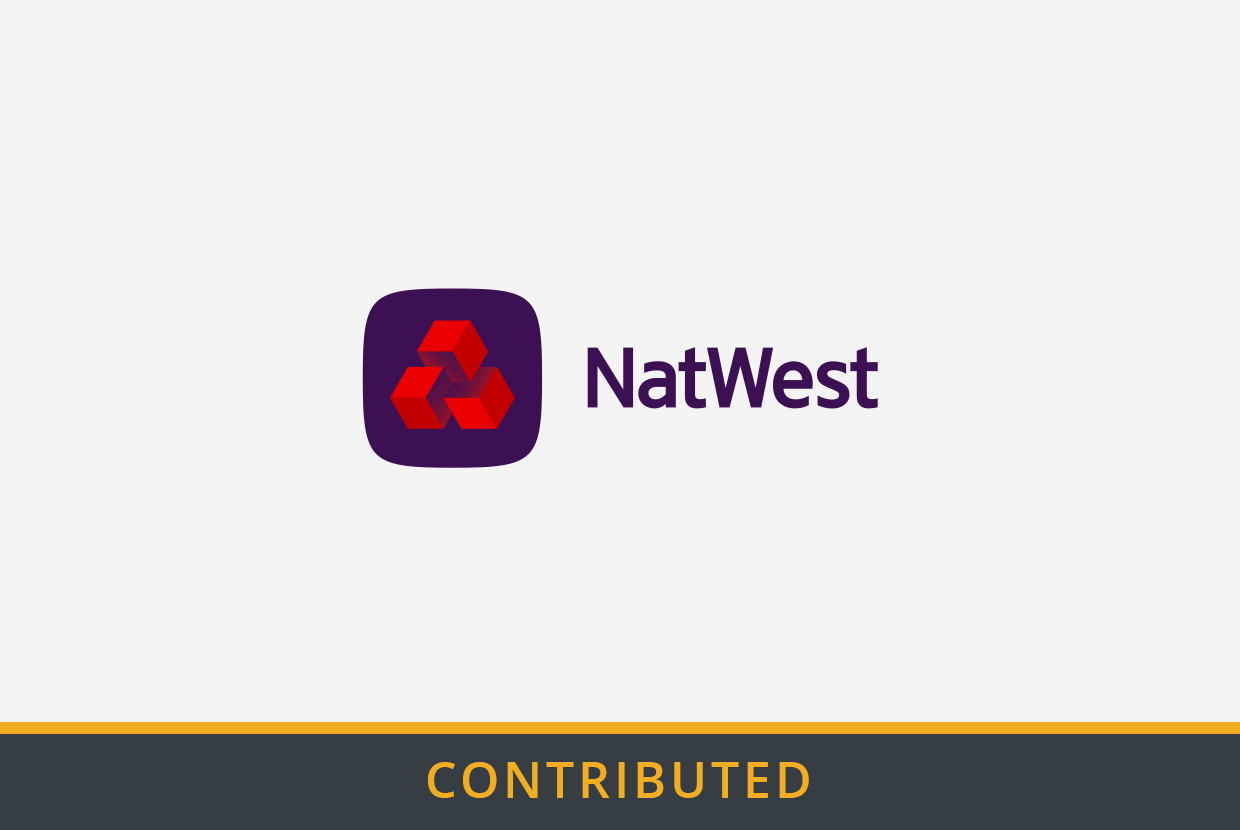In a landscape increasingly shaped by rising geopolitical risk, economic headwinds, and the need to accelerate the transition to net zero, supply chain transparency, resiliency and technology are becoming essential ingredients for businesses looking to thrive amidst disruption, writes Rowan Austin, head of trade origination and advisory at NatWest.
Businesses have faced unprecedented levels of disruption in recent years.
The Covid-19 pandemic and Brexit have reshaped the regional trade landscape, while the war in Ukraine has piled additional pressure on global supply chains – pushing up costs and exacerbating shortages, rushing supply chain management to the top of the corporate agenda. Economic headwinds haven’t helped, with inflation staying persistently high – and with it, interest rates and funding costs.
To say it hasn’t been easy for businesses these last few years would be an understatement, and many have struggled to adapt following each new wave of risks. But these challenges have prompted what we see an as important and healthy shift among businesses: they are moving away from fixating on cost at the expense of all else, and instead embracing a resilience-first mindset that treats suppliers as partners.
Skills and technology: you can’t have one and not the other
As companies ditch cost-centric supply chain management and embrace a more holistic approach that champions resilience and agility across the value chain, demand for supply chain management talent has surged. The number of UK vacancies for supply chain managers on Indeed.com, a jobs website, rose 22% between 2019 and 2022, according to the Financial Times.
Fostering the skills to navigate today’s supply chain threats and vulnerabilities is only part of the solution. The digital capabilities enabled by new technologies and platforms are equally important and are beginning to have a huge impact on supply chain management and supply chain finance.
Getting your supply chain mapped out. Better inventory management – through tools like supply chain management software – is becoming essential for businesses today. In combination with more granular inventory tracking tools, it can help manage the additional storage of surplus stock, helping firms optimise working capital management and costs. Supply chain transparency enables the adaptation of manufacturing and transportation techniques, and the promotion of a cost-effective, sustainable supply chain working towards a low-carbon future. Needless to say, supply chain transparency also helps capital providers get more comfortable with the risk associated with a business, which could translate into greater availability of capital, as well as funding at a lower cost.
Data dashboards to understand everything everywhere all at once. Dashboards can create oversight across all aspects of a supply chain, distilling key information by priority of importance – whether for optimisation, threat avoidance, or otherwise. Now is a good time to invest in platforms to connect to siloed, geographically dispersed supplier operations. In combination with powerful new marketing and sales automation platforms, these technologies can have a profoundly positive impact on firms’ ability to pivot their sales emphasis in line with shifting supply considerations and bottlenecks. A wealth of data can be input and assessed with speed, facilitating more informed risk management and decision-making. This frees up time for risk reporting without the weight of manual data management and lengthy routine tasks.
Artificial intelligence-based threat identification and optimisation. With every greater improvement in artificial intelligence (AI) technology, firms have unparalleled opportunity to explore new tools that can help them detect – and even predict – supply chain disruption, leveraging instant access to timely data such as external weather conditions or port closures. AI might also have suggestions for how to reduce costs in, for example, warehouse management, which can help businesses optimise working capital more effectively.
Meeting customer demand through friend shoring or nearshoring. Along with the rise in reshoring triggered by political risk, so nearshoring and friend shoring have followed. A reassuring option to have, friend shoring involves relocating supply chain activities to a country that’s more consistent with their own country’s geopolitical outlook.
Looking to the future
What do we see coming around the bend for supply chain technology?
Distributed ledger blockchain technology (DLT) is increasingly being considered to support some electronic trade documentation systems. DLT provides a collaborative digital system for recording transactions/information between a prescribed number of users in a secure environment. And while some platforms have floundered, the technology remains robust.
Companies and funding consortiums could then use smart contracts to agree, contain and automate the terms and conditions within that journey – including financial transactions across a chain of suppliers and buyers. These may one day help reduce the cost of information gathering and processing, enabling trade to become more secure.
To further ease this route of digitalisation, the UK’s Electronic Trade Documents Bill (discussed in more detail below) is now going through parliament, thereby supporting the digitalisation of trade across the supply chain, which will boost transparency, visibility, speed, and access to trade finance.
Taking your suppliers – your partners – on the journey with you
Research by the Federation of Small Businesses suggests that 77% of smaller businesses in the UK are part of a supply chain, with over half citing the “failure to pay for goods or services provided” as a top risk.
These suppliers may be under stress because of recent economic turbulence. With the increased cost of liquidity and financing comes a risk of suppliers feeling the pressure of inflation and base rate hikes, leaving them struggling to access capital and facing higher borrowing costs. Financing can be hard to secure, and when it is secured there can be high costs, resulting in reduced production or even bankruptcy, which translates to a failure or restricted supply of goods.
However, with long-term collaboration in mind, larger firms could help suppliers to manage their digitalisation journey. Optimising working capital management for longer-term security could enable smaller suppliers to make tech-related enhancements, such as digital solutions that allow electronic invoicing and payment amid a move towards electronic transactions and learn how to use data more effectively.
Sustainable supply chain visibility
Our collective obligation to reduce carbon emissions and effectively manage environmental, social and governance (ESG) risks continues to rise up the corporate agenda. And as we know, up to 80% of a company’s emissions on average remain locked up within its supply chain.
Supply chain finance has an important role to play here, both in rewarding greater end-to-end sustainability and providing tangible incentives for corporate behaviour change. Structures that offer suppliers financial advantages such as lower pricing, improved access to credit or reduced working capital needs in exchange for prioritising ESG could have a significant positive impact on value chains globally, making both buyers and suppliers more resilient to tomorrow’s major shocks – and creating accountability across the entire supply chain.
Digital will become a legal requirement, so early preparation is key
Supply chains are global but the regulatory environment surrounding the trade documentation requirements is local or regional. But the increasing adoption of a uniform model law will support consistency across differing jurisdictions, driving the replacement of paper documents and instruments with electronic alternatives. This might typically include bills of lading or warehouse receipts.
To clear the path towards the digitalisation of trade, the United Nations has created the Model Law on Electronic Transferable Records (MLETR). Following on from MLETR, the UK’s own Electronic Trade Documents Bill is now going through parliament, due to be passed later this year. This would be a significant move for global trade as many transactions are based on the Law of England and Wales. The Bill would offer compliant solutions that work alongside other platforms to streamline the trade finance process. To date, a handful of jurisdictions have adopted legislation supporting the MLETR, with more expected to follow their lead.
Based on findings from the World Trade Organization and the UN, it is estimated that 25 billion paper documents are generated and couriered around the world each year for container shipping alone, so it isn’t hard to envisage the benefits. As well as being kinder to the planet, think reduced operational costs, increased security and transparency and far faster document verification and transactions.
Given the direction of travel, it’s important for business leaders to recognise that preparing for the digitalisation of trade is essential, not just because it will likely one day become a regulatory requirement (security and standardisation being chief drivers) but because of the wealth of benefits it can bring: better resiliency, adaptability and sustainability, and improved access to funding.








